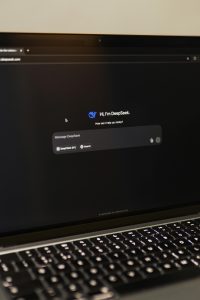My Experience with AI-Enhanced Content Editing: Surpassing My Expectations
Discovering the Power of AI for SEO: My Journey to Reviving a Dormant Website
As the founder of a corporate company with a four-year-old domain that had remained largely inactive for the past year, I was initially skeptical about leveraging artificial intelligence for website content optimization. However, after months of contemplating, I decided to test the waters by implementing some basic SEO strategies and content creation techniques using AI tools.
The Initial Setup: A Dormant Website
The website I worked on was quite simple, featuring only the essential pages like “About Us” and a few blog articles—just five, to be exact. Even when searching for the company name, the website barely appeared on the second or third pages of Google. With this in mind, I thought, “What do I have to lose?” and chose to experiment with AI tools like ChatGPT and DeepSeek to enhance its SEO.
Instead of using the AI to simply rewrite existing articles, I focused on creating fresh content. I gathered notes and ideas from my personal app and planned a three-month roadmap detailing the number of articles, targeted keywords, and content themes.
Crafting the Roadmap
After dedicating a couple of hours to refining my strategy, I created a structure that outlined content topics, their corresponding keywords, and publication dates. However, the initial content creation phase was challenging. Both the AI and I struggled to understand the desired output. When I requested a 3,000-word article, the AI sometimes returned only 400 words presented in an unprofessional tone.
Over time, I learned how to better instruct the AI to generate extensive, high-quality articles that aligned with my standards. By the end of the week, I had a collection of articles meticulously drafted based on my notes, all scheduled for release over the next three months.
Tracking Progress
In just 15 days, search engines began to index the website, with noticeable improvements on platforms like Yandex and Bing. Within a month, it secured the top position for the company name on both search engines and even started appearing on Google’s first page. Although I was not initially gaining outstanding traffic, I observed some interest in long-tail keywords—a promising sign of growth.
By the end of the first month, my website had moved from the depths of the search results—previously ranked around the 5th to 10th pages on Google—to gaining visibility on its first few pages. The second month brought fluctuations; the website’s ranking dipped temporarily but














Post Comment